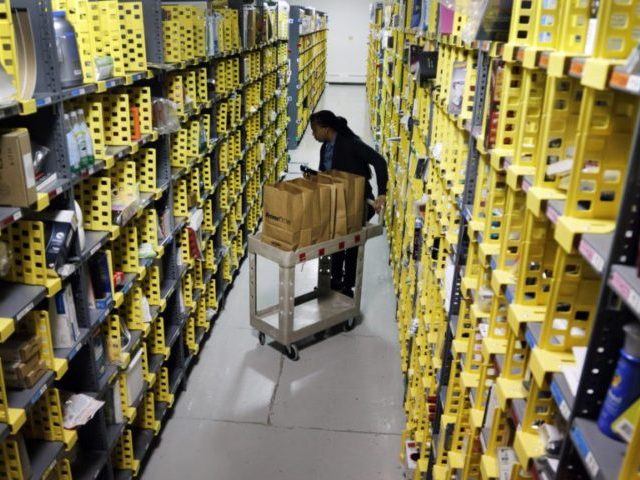Mirror Reporter Alan Selby spent five brutal weeks at UK Amazon’s ironically titled “fulfillment centre,” documenting the trials and working conditions of its exhausted workers.
At Amazon’s newest warehouse in Tilbury, Essex, Selby “found staff asleep on their feet, exhausted.” His firsthand account says that “those who could not keep up with the punishing targets faced the sack – and some who buckled under the strain had to be attended to by ambulance crews.” Selby is no slouch; yet even as an experienced marathon runner, he said days at the warehouse “left me feeling dizzy, and I worried I might keel over if I kept pushing myself as hard as I needed to meet my targets.”
Their toilet breaks are timed, and the (reportedly disgusting and ill-maintained) toilets are over a quarter mile away within the vast complex. Inactivity at the station is timed, even for those breaks, so employees are often forced to keep themselves from even going to the bathroom, lest it take too long. There is always another shelf of boxes, brought by the relentless robots that rule the floor.
A meter in front of the individual metal cages from within which they work tells them whether they are hitting goals the reporter described as “impossible.” He said that “employees at UK warehouses have told of sleeping in tents and under bridges just to get to work on time,” and “staff have been paid less than the living wage, and it even emerged drivers had faced fines for ‘early’ deliveries.”
Employees, he claims, exist barely above the level of the machines they service, not even allowed to sit down at any point of the day, regardless of the pace required or progress made. Rather than hiring more people to reduce the ten-hour shifts and to make the workplace manageable without ambulance support, Amazon has taken an approach that seems to derive inspiration from Apple partner Foxconn’s iPhone factories in China. To keep up with their shifts, some employees are forced to sleep in tents or under bridges in between.
Selby said that “Amazon has recognized humans are the least efficient part of the operation,” so “it felt like the human staff were reduced to livestock, existing only to service the machines.” The aforementioned robots will feed packages to each enclosed employee. Said employee then has nine seconds to complete preparation of the item for packaging. The goal? 300 packages an hour. To add to the fun, “a screen in front of me offers constant reminders of my ‘units per hour’ and exactly how long each has taken.”
This is how the sausage is made; this is the retail phenomenon that gave Jeff Bezos his $100 billion net worth. Those desperate for employment will travel up to four hours just to keep their job, and Amazon has proven more than willing to capitalize on a market and economy where reliable income is at a premium. And despite repeated reports of these working conditions, and vows by Amazon to improve the quality of life of its employees with basic humane practices, it seems to be, if anything, growing worse.
In typical corporate-speak, Amazon has responded:
Amazon provides a safe and positive workplace with competitive pay and benefits from day one. We are proud to have created thousands of permanent roles in our UK fulfilment centres in recent years.
We offer great jobs and a positive environment with opportunities for growth. As with most companies, we expect a certain level of performance.
Targets are based on previous performance achieved by our workers. Associates are evaluated over a long period of time as we know a variety of things could impact the ability to meet expectations in any given day or hour.
It sounds just as rosy as the gleefully singing employees on their commercials would have you believe. Unfortunately for Amazon employees, the reality is very different.
Follow Nate Church @Get2Church on Twitter for the latest news in gaming and technology, and snarky opinions on both.

COMMENTS
Please let us know if you're having issues with commenting.